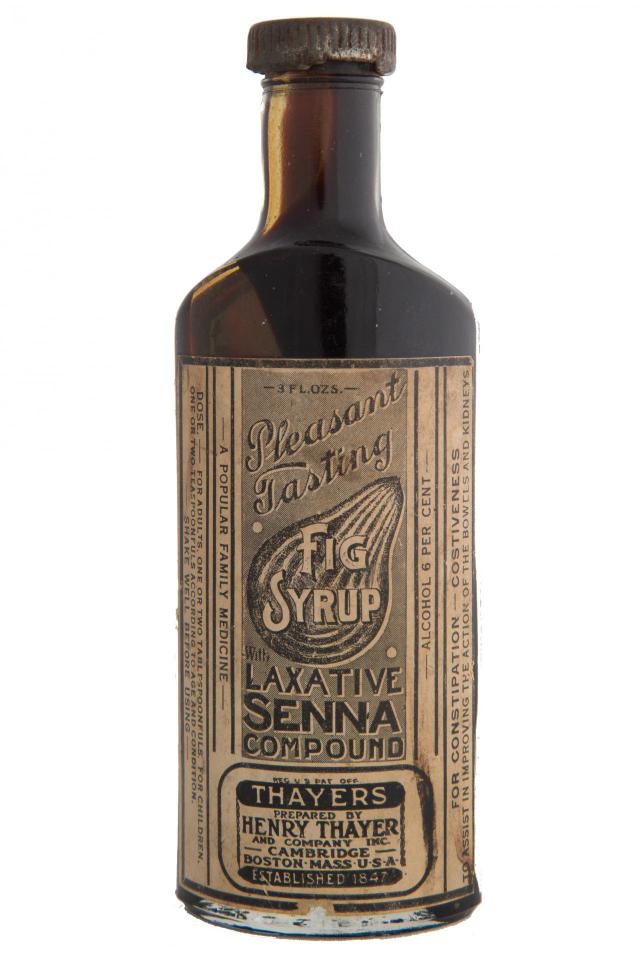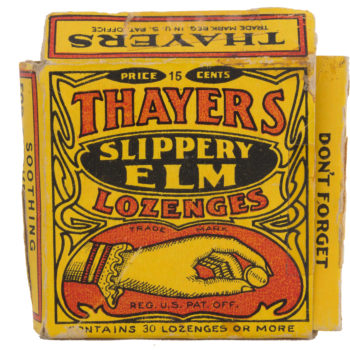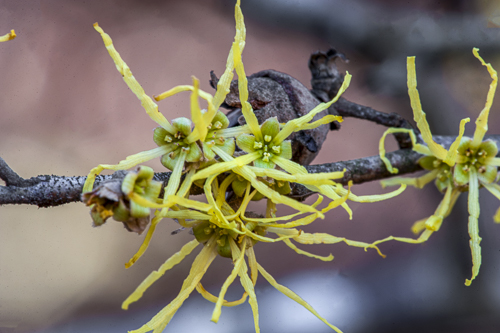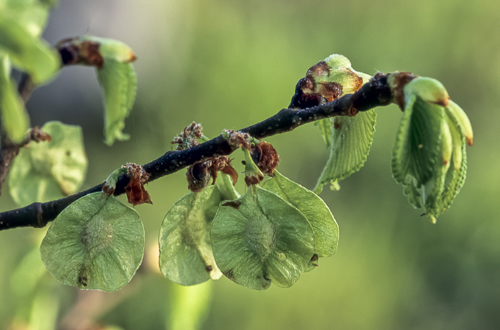By
Karen Raterman
The
year was 1847 and Henry Thayer was 19 years old when he founded Henry Thayer
& Company in Cambridge, Massachusetts, and began selling his natural elixirs
exclusively to medical professionals. More than 170 years later, the company,
now more generally referred to as Thayers Natural Remedies, is still a thriving
provider of natural personal care products that carry the founder’s name and
bear his picture. Today, these products are sold in natural and specialty
retail stores as well as in mainstream retail outlets in the United States and
internationally. The company has stayed relevant by sticking to its roots and Henry
Thayer’s vision to rely on the power of nature to protect, soothe, and
revitalize the body.
Henry
Thayer was trained early in the medical arts.1 The son of a
physician from one of Massachusetts’  founding families, he drew on that
background and knowledge to launch his laboratory on Main Street in Cambridge, where
he produced herbal tinctures, infusions, syrups, and salves as the town’s
apothecary. Prominent among his products was Witch Hazel Extract, which was described
as a “tonic, astringent and sedative.” founding families, he drew on that
background and knowledge to launch his laboratory on Main Street in Cambridge, where
he produced herbal tinctures, infusions, syrups, and salves as the town’s
apothecary. Prominent among his products was Witch Hazel Extract, which was described
as a “tonic, astringent and sedative.”
Over
time, Thayer expanded his line to include more than 800 products, such as
infusions, poultices, syrups, tinctures, and wines. By 1861, Henry Thayer &
Company was considered the largest pharmaceutical  company in the United States,
according to company literature.1 company in the United States,
according to company literature.1
The
early success of Thayer’s products may be attributed to the fact that the young
physician was ahead of his time in thinking about illnesses and medical
treatments. Years earlier, during the Colonial period, many medical practitioners
still attributed health problems to an imbalance of humors, or bodily fluids (namely,
blood, phlegm, black bile, and yellow bile) — a medical theory that dates back
to ancient Greece. An imbalance was “corrected” by bleeding, purging, and
sweating and then replenishing the fluids with rest, diet, and
medicinals (a practice referred to as “heroic medicine” in medical histories).2
By
the mid-19th century, however, theories were beginning to change, and Henry
Thayer was among the early pioneers of a more modern medical practice. Thayer
was one of the first in the United States to create and commercially sell natural, safe, and
effective remedies to address common ailments like colds,
allergies, and sore throats.1
Thayer
also was influenced by medicinal treatments used by the indigenous peoples of
New England.1 Witch  hazel (Hamamelis
virginiana, Hamamelidaceae), for example, can be found along damp stream
banks in wooded areas of the region. Thayer noticed that Native American tribes
grew, extracted, and applied witch hazel to their skin to reduce inflammation
and heal cuts. Native tribes around Cambridge also sucked on the fibrous, red
inner bark of slippery elm (Ulmus rubra
syn U. fulva, Ulmaceae) to soothe sore
throats. hazel (Hamamelis
virginiana, Hamamelidaceae), for example, can be found along damp stream
banks in wooded areas of the region. Thayer noticed that Native American tribes
grew, extracted, and applied witch hazel to their skin to reduce inflammation
and heal cuts. Native tribes around Cambridge also sucked on the fibrous, red
inner bark of slippery elm (Ulmus rubra
syn U. fulva, Ulmaceae) to soothe sore
throats.
The
company was recognized early in its history for achievements in product
development and manufacturing. In 1855, the American Institute of New York
awarded Thayers a silver medal for excellence in preparation of fluid extracts.
In 1856, the Massachusetts Charitable Mechanics Association recognized the
company for the apparatus it used to produce these extracts.3
While
Henry Thayer died in 1902, the company believes that its  simple, steadfast
premise has endured: to make products with simple, pure botanical ingredients
that clean and nourish skin naturally. That same year, the company launched its
slippery elm lozenges, which remains one if its oldest products. simple, steadfast
premise has endured: to make products with simple, pure botanical ingredients
that clean and nourish skin naturally. That same year, the company launched its
slippery elm lozenges, which remains one if its oldest products.
The
efficacy of these individual formulas is one reason for Thayers’ staying power,
according to John Reppucci, vice president of sales and marketing at Thayers.
“These medicines have stood the test of time,” he said (email, March 13, 2018).
“These natural elixirs have been a fixture in medicine cabinets for
generations. Through a long-standing commitment to create pure, effective,
cruelty-free products of the highest natural quality, [Thayers] has built a
loyal consumer base. In fact, according to SPINS data, Thayers is the number
one witch hazel brand in the natural channel, a position it has held for [more
than] five years, and the number one slippery elm lozenge brand.”
For
many people, these products also have a lasting and personal legacy. For
example, in an interview in the company’s newsletter titled “1847,” Marlene
Adelmann, founder and director of the Herbal Academy, an international school
of herbal arts and sciences in Bedford, Massachusetts, noted that she remembers
seeing Thayers Witch Hazel on both her grandmother’s and mother’s dressing
tables. Although Adelmann said she makes many of her own herbal beauty
products, Thayers witch hazel is one store-bought exception. “I can’t remember
a time when this bottle was not on my bathroom shelf.”4
Time-Tested Ingredients
A
critical reason that Thayers’ products have remained relevant for such a long
time is that the company, now based in Easton, Connecticut, has worked to balance
its mission to develop natural products and treatments while also making them
work well for today’s modern consumers. “Though the company is no longer Thayer-family
owned, it remains a family-owned company that emphasizes the importance of
remaining faithful to our core mission and values,” said Reppucci (email, April
6, 2018). The Thayers team now includes 20 dedicated individuals who have a
personal passion for the brand and the industry, he added.
While
the company’s operations have evolved over the past two centuries, the
ingredients the company uses have stayed relatively unchanged. The main
difference between the products Thayers produces today and those first made by
Henry Thayer in 1847 are the finished forms in which the ingredients are used,
Reppucci noted. The current line of lotions, sprays, mists, and gels are much
easier to use than the original methods of rubbing the bark on the body or
throat. Today, the ingredients are  combined with other ingredients, such as
oatmeal (Avena sativa, Poaceae),
menthol (derived from various Mentha [Lamiaceae]
species), and camphor (derived from the camphor laurel [Cinnamomum camphora, Lauraceae]), to help bring these natural
remedies to modern consumers, he explained. combined with other ingredients, such as
oatmeal (Avena sativa, Poaceae),
menthol (derived from various Mentha [Lamiaceae]
species), and camphor (derived from the camphor laurel [Cinnamomum camphora, Lauraceae]), to help bring these natural
remedies to modern consumers, he explained.
The
company now produces products featuring its signature ingredients in three
basic categories: skin care products (facial toners and astringents), health
care remedies (lozenges, saline sprays, and joint support remedies), and dry
mouth products (sprays and lozenges).
The
brand’s flagship ingredient, witch hazel, is a flowering tree with toothed, egg-shaped
leaves and small, yellow flowers. It is known for its medicinal properties and
was the basis for Henry Thayer’s first product. Traditionally, witch hazel leaf
and bark extracts have been used externally as a liniment for inflammation and
bruises.5 Witch hazel extract is sought after for use in
alcohol-free toners, astringents, facial mists, and body bars. “The company still
produces witch hazel the old-fashioned way — not distilled,” said Reppucci,
which means “it contains [about] 195 percent more tannins, which are naturally
occurring substances found in the bark and skin of some plants, including witch
hazel. Tannins have mild antioxidant properties and help balance the skin’s pH
levels, reduce irritation, and serve as one of the best natural acne remedies.
“We
steep our witch hazel in warm water for hours, keeping all the beneficial
tannins in our formula and not losing them during the distillation process,” he
added.
Similarly,
Thayers included slippery elm extracts in many of its early and current
products. Slippery elm is approved by the US Food and Drug Administration as a
safe and effective over-the-counter drug ingredient for its soothing,
protective, moisturizing, and healing properties.6 A natural
demulcent, it is the active ingredient in Thayers lozenges and dry mouth sprays,
which are designed to heal sore throats and stimulate saliva production. These
products are created by grinding the inner bark into a powder and then
combining it with other ingredients like dextrose, magnesium stearate, and
sucrose.7 Slippery elm is also used in Thayers lip balms as well as
Thayers Allergy & Sinus Relief Nasal Mist and Spray.
Today,
as demand grows for products that contain ingredients that are considered clean and
familiar grows, the company is well poised to continue to offer products that
will resonate with consumers. To
that end, Thayers has continued to look for ingredients that fit this
model. For example, Thayers Natural Remedies now features a line of skin care
products that contain apple cider vinegar, an ingredient first used by the
Romans. Apple cider vinegar is now thought to provide many health benefits,
although more data are needed. However, apple cider vinegar is a well-known
home remedy for relieving itches from rashes and insect bites.8
Apple
cider vinegar is a main component of Thayers Dry and Itchy Skin Relief Soothing
Lotion and Soothing Spray. The reason it is effective seems to be that the pH of
apple cider vinegar is similar to that of the acid mantle of the skin — the
layer of oil and perspiration that helps protect and moisturize skin. Because the
pH  of apple cider vinegar matches the pH of the skin, the company’s blog says
that it cleanses gently and doesn’t strip the skin of natural oils and acidity
that protect and balance it. Apple cider vinegar also contains potassium, which
helps address allergic conditions such as eczema.9 of apple cider vinegar matches the pH of the skin, the company’s blog says
that it cleanses gently and doesn’t strip the skin of natural oils and acidity
that protect and balance it. Apple cider vinegar also contains potassium, which
helps address allergic conditions such as eczema.9
In
addition to developing and introducing new products, Thayers also continues to
update and improve its existing products, including those with witch hazel. In
1989, for example, the company introduced an alcohol-free version of its witch hazel
facial toners, because alcohol can be too harsh to be used as a daily facial
care regimen for many people, Reppucci noted. In 2012, Thayers began using
certified organic witch hazel for its proprietary extract. The witch hazel is
grown exclusively on an organic family farm in Easton, a setting that has since
become home to Thayers’ corporate headquarters. “Certified organic symbolizes
the purity of the ingredient and further underscores the importance of creating
natural, beneficial products,” said Reppucci.
More
recently, the company introduced new witch hazel toners with companion
ingredients like coconut (Cocos nucifera,
Arecaceae) water and aloe vera (Aloe vera,
Xanthorrhoeaceae). Reppucci noted that “the coconut water is a natural
anti-inflammatory that works to fight acne while also hydrating the skin.” It has
a high vitamin C content, which increases collagen production and brightens and
protects the skin from sun damage, he added.
The
new formula claims to help protect and revitalize skin and comes in
three scents: cucumber (Cucumis sativus, Cucurbitaceae), lavender (Lavandula angustifolia, Lamiaceae), and rose (Rosa spp., Rosaceae) petal. The
additional ingredients do more than just provide scent. For example, rose
petals are full of natural oils that restore and smooth skin and serve as a
natural astringent to tighten pores. Cucumber contains antioxidants that help
clear clogged pores.10
Ultimately,
a commitment to both evolution and its past may be the secret to Thayers’
longevity, and Reppucci doesn’t see that changing anytime soon. Thayers’ use of
witch hazel and slippery elm dates back to the earliest days of the company. “The
popularity of these ingredients have stood the test of time and remain an
integral part of our continuing product development,” he said. Given how much
the world has changed since 1847, that is saying quite a lot
Image credits (top to bottom): Thayers Natural Remedies logo
Thayers fig syrup bottle
Thayers slippery elm lozenges package
Thayers valerian pills bottle
Witch hazel (Hamamelis virginiana, Hamamelidaceae); ©2018 Steven Foster
Slippery elm (Ulmus rubra, Ulmaceae); ©2018 Steven Foster
References
- The
Evolution of Thayers: Witch Hazel, Slippery Elm and Apple Cider Vinegar. Thayers
webiste. Available at: www.thayers.com/the-evolution-of-thayers/.
Accessed March 28, 2018.
- Eichner
LG. The Practice of Domestic Medicine During the Colonial Period. Tredyffrin
Easttown Historical Society History Quarterly Digital Archives. Summer
2004;41(3):100-106. Available at: www.tehistory.org/hqda/html/v41/v41n3p100.html.
Accessed May 9, 2018.
- Thayers
Historical Timeline. Thayers website. Available at: www.thayers.com/history/.
Accessed March, 28, 2018.
- Meet
the Founder and Director of The Herbal Academy International School of Herbal Arts
and Sciences. 1847. December 30,
2016. Available at: www.thayers.com/meet-the-founder-director-of-the-herbal-academy/.
Accessed March 28, 2018.
- Witch
Hazel. 1847. December 2016;1:15.
Available at: www.thayers.com/issue1-1847/.
Accessed March 29, 2018.
- American
Herbal Pharmacopoeia Releases New Monograph on American Ginseng Root and
Slippery Elm Bark. HerbalEGram. 2012;9(3). Available at: http://cms.herbalgram.org/heg/volume9/03March/NewAHPmonographs.html.
Accessed April 4, 2018.
- Slippery
Elm: A Sound Remedy for Singers. Thayers website. Available at: www.thayers.com/slippery-elm-a-sound-remedy/. Accessed on March 29, 2018.
- LaMotte
S. Apple Cider Vinegar: What the Experts Say. CNN. Available at: www.cnn.com/2017/04/18/health/apple-cider-vinegar-uses/index.html.
Accessed April 4, 2018.
- Four Skin
Benefits of Apple Cider Vinegar. Thayers website. Available at: www.thayers.com/four_benefits_of_apple_cider_vinegar/.
Accessed on March 29, 2018.
- What
Makes Our Natural Remedies So Effective. Thayers website. Available at: www.thayers.com/blog-what-makes-our-natural-remedies-so-effective/.
Accessed March 29, 2018.
|